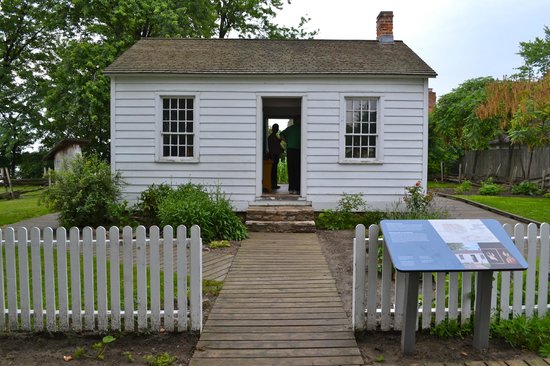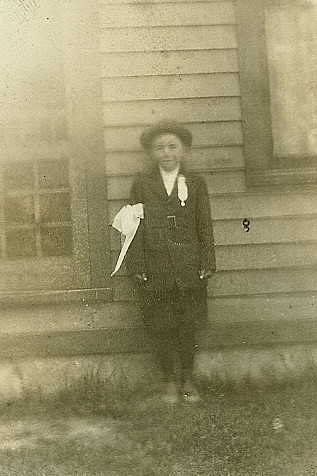James Grant, born in 1896 was an adopted son of Joseph Grant and Mary Stout (daughter of Elizabeth Dornan) grew up in Amherstburg, Ontario, Canada.
On September 22, 1914, at the age of 18 and 4 months he enlisted with the 1st Battalion, Machine Gun Division, Canadian Expeditionary Overseas Forces (C.E.F) as an active militia member of the 1st Hussars of Canada. the 1st Hussars motto was HODIE NON CRAS (Today not tomorrow). He was 5’5″ with grey eyes and light brown hair.
He trained at CFB Valcartier Quebec which was originally erected as a military training camp in August 1914 as part of the mobilization of the Canadian Expeditionary Force at the onset of World War I.[1] The name Valcartier comes from the town of Saint-Gabriel-de-Valcartier, of which a large section was expropriated in order to create the military training camp. Due to its proximity to the Port of Quebec, Valcartier became the largest military camp on Canadian soil, including some 32,000 men and 8,000 horses.
According to his military papers, James served in Canada, England, France and Belgium. He had shrapnel in his right shoulder which impacted movement and bullets to his right arm and back. He received no medals or decorations for his service though he was granted the right to wear two stripes and a gold braid. He was wounded in both battles at Ypres on April 22, 1915 and June 13, 1916.
During World War I, the Battle of Ypres 1915 (2nd Battle of Ypres) was fought from 22 April – 25 May 1915 for control of the strategic Flemish town of Ypres in western Belgium.3 Therefore, James was wounded on the 1st day of the Battle of Gravenstafel Ridge.

Men Under Gas Illustration by J. Matanic (?) (bottom left) From p. 57 of The Times History of the War Illustrated, Volume 4. (1915)
The Battle of Ypres was the first mass use by Germany of poison Chlorine gas on the Western Front. It also marked the first time a former colonial force (the 1st Canadian Division) defeated a European power. German chemists proposed to Colonel Max Bauer that the Germans could empty the opposing trenches by a surprise attack with tear gas. After a field test a decision was made to use heavier than air chlorine gas. The chemical attack was launched on 22 April 1915 shortly after 17:00; French troops in the path of the gas cloud sustained about 6,000 casualties. Many died within ten minutes and others were blinded.
An officer described the scene: Dusk was falling when from the German trenches in front of the French line rose that strange green cloud of death. The light north-easterly breeze wafted it toward them, and in a moment death had them by the throat. One cannot blame them that they broke and fled. In the gathering dark of that awful night they fought with the terror, running blindly in the gas-cloud, and dropping with breasts heaving in agony and the slow poison of suffocation mantling their dark faces. Hundreds of them fell and died; others lay helpless, froth upon their agonized lips and their racked bodies powerfully sick, with tearing nausea at short intervals. They too would die later – a slow and lingering death of agony unspeakable. The whole air was tainted with the acrid smell of chlorine that caught at the back of men’s throats and filled their mouths with its metallic taste.
— Captain Alfred Oliver Pollard, The Memoirs of a VC (1932)[4]
After the war, German casualties from 21 April to 30 May 1915 were recorded as 34,933 by the official historians of the Reichsarchiv. In the British Official History, J. E. Edmonds and G. C. Wynne recorded British losses of 59,275 casualties, the French about 18,000 casualties on 22 April and another 3,973 from 26–29 April. Canadian casualties from 22 April to 3 May were 5,975, of whom about 1,000 men were killed. The worst day was 24 April, when 3,058 casualties were suffered during infantry attacks, artillery bombardments and gas discharges.
Canadian participation in the Battle of Gravenstafel is commemorated on the Saint Julien Memorial in the village. The village of Saint Julien and a section of forested land called Saint Julien Wood was the junction between the British and French sectors of responsibility. James Grant’s Canadian First Division was assigned the most northern section of the British line and to their left, the 45th (Algerian) Division held the southernmost end of the French line. The German Army had brought forward 168 tons of chlorine gas deployed in 5,730 cylinders buried in front of their trenches, opposite Langemark-Poelkapelle, north of Ypres.[6]
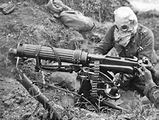
The Canadians, who had been moved into their positions only a few days earlier were manning the lines for several hundred meters along a front to the southwest of St. Julien when the German Army unleashed the first poison gas attack on the Western Front on 22 April 1915. James was advancing when he was shot in the right arm and shoulder. He was given 3 months light duty after his wounds were deemed healed.
Pushed towards the Allied lines by a wind from the north, the initial gas attack largely drifted to the north and west of the Canadian lines, into the trenches of the French colonial troops of the French 45th (Algerian) and 87th (Territorial) Divisions, of 26th Reserve Corps.[2] The gas drifted across positions largely held French colonial troops who broke ranks and abandoned their trenches after witnessing the early casualties, creating an 8,000 yard (7 km) gap in the Allied line.
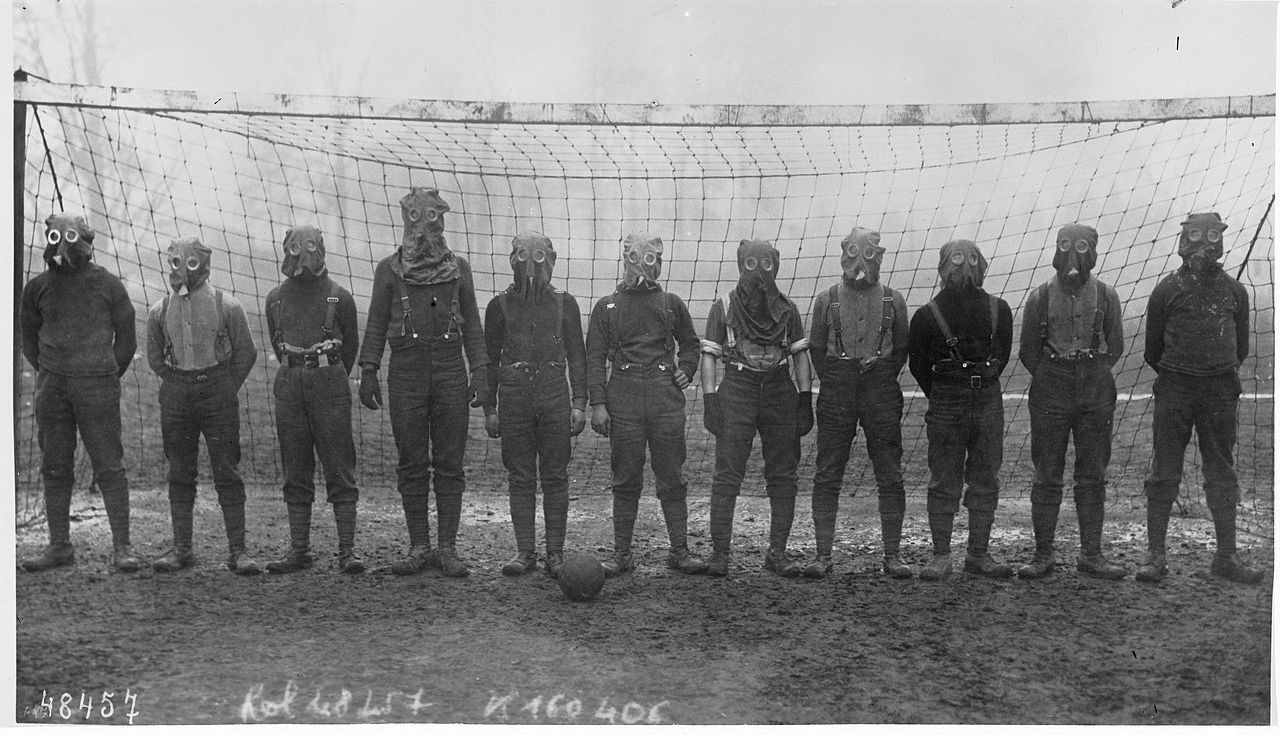
The German infantry were also wary of the gas and, lacking reinforcements, failed to exploit the break before the First Canadian Division and assorted French troops reformed the line in scattered, hastily prepared positions 1,000 to 3,000 yards apart.[3] In actions at Kitcheners Wood, Mauser Ridge, Pilkem Ridge and Gravenstafel Ridge the Canadians held the line and prevented a German breakthrough until they were relieved by reinforcements on the 24 April. In the 48 crucial hours that they held the line, 6,035 Canadians – or one man in every three who went into battle – became casualties; of that number, approximately 2,000 (or one man in every nine) were killed.
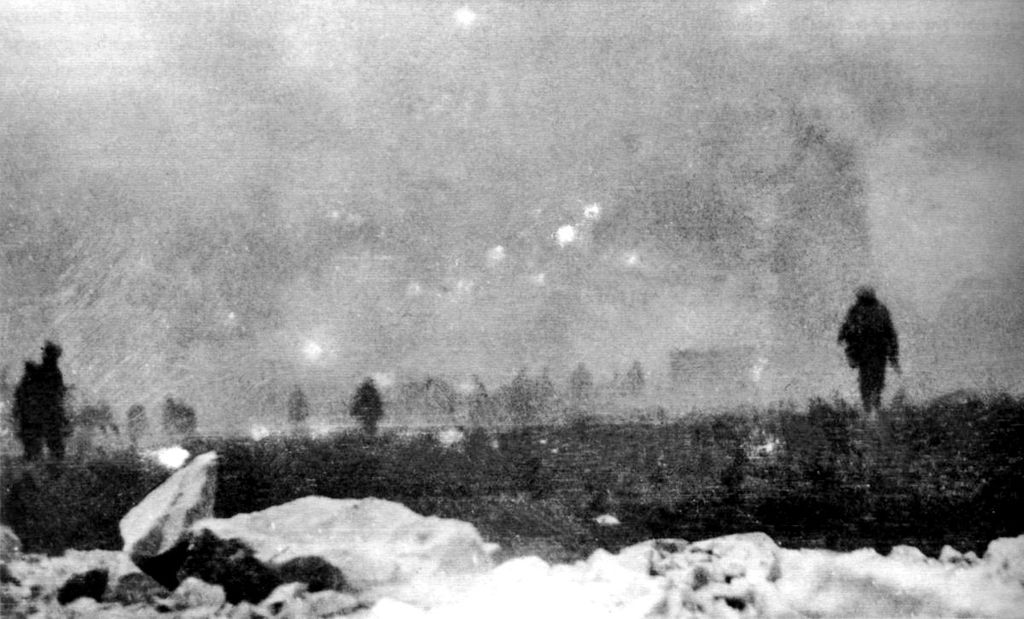
The diary entry of Canadian soldier A. T. Hunter about the first use of chlorine gas as a weapon in WWI.
The French troops “saw none of this installation of premeditated murder. Looking across to the German trenches at about five in the afternoon, they saw a series of sharp puffs of white smoke and then trundling along with the wind came the queer greenish-yellow fog that seemed strangely out of place in the bright atmosphere of that clear April day. It reached the parapet, paused, gathered itself like a wave and ponderously lapped over into the trenches.
“Then passive curiosity turned to active torment – a burning sensation in the head, red-hot needles in the lungs, the throat seized as by a strangler. Many fell and died on the spot. The others, gasping, stumbling with faces contorted, hands wildly gesticulating, and uttering hoarse cries of pain, fled madly through the villages and farms and through Ypres itself, carrying panic to the remnants of the civilian population and filling the roads with fugitives of both sexes and all ages.”
— A.T. Hunter, Canadian Soldier, who witnessed the first chlorine gas attack. Excerpt from “Canada in the Great World War” (1919), The Second Battle of Ypres.[7]
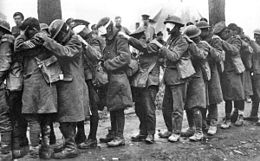
During the Second Battle of Ypres, Lt. Col. John McCrae M.D. of Guelph wrote In Flanders Fields in the voice of those who perished in the war. Published in Punch 8 December 1915, the poem is still recited on Remembrance Day and Memorial Day.
IN FLANDERS FIELDS By Lieutenant Colonel John McCrae
In Flanders fields the poppies blow
Between the crosses, row on row,
That mark our place: and in the sky
The larks still bravely singing fly
Scarce heard amid the guns below.
We are the dead: Short days ago,
We lived, felt dawn, saw sunset glow,
Loved and were loved: and now we lie
In Flanders fields!
Take up our quarrel with the foe
To you, from failing hands, we throw
The torch: be yours to hold it high
If ye break faith with us who die,
We shall not sleep, though poppies grow
In Flanders fields.
James’ second wounding on June 13, 1916 the last day in the Battle of Mont Sorrel (2–13 June 1916) took place south of Ypres with the 20th Division (XIV Corps) and the 1st, 2nd and 3rd Canadian divisions of the Canadian Corps.[8] The main thrust of the German attack principally came from two divisions of the German XIII (Württemberger) Corps, which launched a sudden artillery bombardment, followed by an infantry attack on 2 June at 13.07 hours towards British encampment on high ground. The German Army’s aim was for a limited attack to clear the British Army off this advantageous high ground, the only high ground with dominating views for observation over the German sector that it possessed at this time.[9] The German artillery barrage at the start of the German attack and the committed defense by the Canadians resulted in many Canadian casualties and the high ground of the Canadian positions from Mount Sorrel to Hill 62 (Tor Top) was captured. A Canadian counter-attack on 3 June was unsuccessful and the fighting continued for another ten days.
On 13 June, the day James was wounded for a second time, the Canadians were again in possession of their old Front Line area and the German gains of 2 June had for the most part been reinstated. Some attempts by the Germans in the early hours of 14 June to make counter-attacks were not successful and the battle drew to a close. The Canadian casualties by the end of the 13 days of fighting were just under 8,500; 1,000 men were killed and another 1,900 were missing. German casualties were estimated to have been approximately 5,700.[10]
He was released and sent back to Canada on the SS Megantic then discharged at Woolsey Barracks, the rank of private, as medically unfit in August 1918 at London, Ontario.

He complained of pain from his injuries to his shoulder including weakness and partial loss of function, partial loss of function and numbing on the right thigh, arm and back. The scar tissue from the shrapnel would was adhering to surrounding tissue making movement lessened and painful. Plus the impact on his body from his right leg “being buried” at Ypres. His leg’s burial by a shell as documented in his military papers was in June of 1916 during the Battle of Mount Sorrel where German pioneers detonated four mines near the Canadian forward trenches, before the Germans attacked with six battalions, five more battalions in support and an additional six in reserve. His discharge papers document his consistent turns in the hospital for cough, loss of appetite, stomach ailments, headaches, vomits easily and constant pain. He also complained of dizzy spells. He was furloughed in August of 1915 for 7 days but overstayed that furlough by 4 months so he served 61 days in detention. The C.E.F. made sure to dock his pay. His papers state that the permanent disability and all the other symptoms remarkedly did not add up to James being hampered in earning a living it would just be done with “lessened efficiency”.
The pace and intensity of industrialized warfare had profound effects on the human mind and body that were not related to wounds or physical injury. Poorly understood at the time and for many years afterwards, the crying, fear, paralysis, or insanity of soldiers exposed to the stress and horror of the trenches was often held by medical professionals to be a “bad attitude”, cowardice, and the result of physical damage to the brain by the shock of exploding shells. Military authorities often saw its symptoms as expressions of cowardice or lack of moral character. Its true cause, prolonged exposure to the stress of combat, would not be fully understood or effectively treated during the war.[11] Doctors diagnosed almost 10,000 Canadians with shellshock during the war. Medical treatment ranged from the gentle to the cruel. Freudian techniques of talk and physical therapy helped many victims, while more extreme methods involved electric shock therapy. During the latter, patients were electrocuted in the hope of stimulating paralyzed nerves, vocal chords, or limbs. Shock therapy was more effective than Freudian techniques in returning soldiers to the front, with about two-thirds of all patients returned to the front. It is unknown how many relapsed when they re-entered combat and eventually civilian life.
Civilian life did not far well with James. He married Lilly Saville shortly after his return in 1918 but they divorced in 1924. By the age of 22 he was in prison, and had been hauled into court in a inheritance dispute with his step mother and lost the fortune his father had left him, disappeared while on parole to address the inheritance dispute in court.
He was in Kingston Penitentiary and escaped parole in 1931. Kingston, now a Canadian National Historic Site, was a maximum security prison located in Kingston, Ontario on the east side of Portsmouth Harbor.[12] Charles Dickens visited Kingston in 1842 and commented in his American Notes, “There is an admirable jail here, well and wisely governed, and excellently regulated, in every respect. The men were employed as shoemakers, ropemakers, blacksmiths, tailors, carpenters, and stonecutters; and in building a new prison, which was pretty far advanced towards completion. The female prisoners were occupied in needlework.”[3] Dickens obviously was not aware of the child prisoners who were regularly flogged. Much of Alias Grace is set in Kingston Penitentiary where the real life Grace Marks was imprisoned. Most of Canada’s more notorious inmates have been held at Kingston Penitentiary over the years. [13] When a riot broke out in 1932, Communist Party of Canada general secretary Tim Buck was in a KP cell serving time for sedition. While guards were ordered to fire shots through the peep-hole of cells where and when they detected a commotion, they also fired seven shots into Buck’s cell, which the government later admitted was just “to frighten him.” [14]
We do not know where James landed but next step is to check with the Petitionary. https://www.penitentiarymuseum.ca/
- https://en.wikipedia.org/wiki/CFB_Valcartier
- By Unknown – This image is available from Bibliothèque et Archives nationales du Québec under the reference number P547S1SS1SSS1D513P019R, Public Domain, https://commons.wikimedia.org/w/index.php?curid=8443689
- https://en.wikipedia.org/wiki/Second_Battle_of_Ypres
- “2nd Battle of Ypres”, Spartacus Educational
- Van der Kloot, W. (2004). April 1915: Five future Nobel prize-winners inaugurate weapons of mass destruction and the academic-industrial-military complex. Notes Rec. R. Soc. Lond. 58: 149–160, 2004/
- Simkins, Peter (2003). The First World War: The War to End All Wars. Osprey Publishing. p. 57. ISBN 978-1-84176-738-3.
- http://chemicalweapons.cenmag.org/first-hand-accounts-of-the-first-chlorine-gas-attack/
- https://en.wikipedia.org/wiki/Second_Battle_of_Ypres
- http://www.greatwar.co.uk/battles/ypres-salient/1916-battles-ypres-salient.htm
- http://www.greatwar.co.uk/battles/ypres-salient/1916-battles-ypres-salient.htm
- https://www.warmuseum.ca/firstworldwar/history/life-at-the-front/trench-conditions/shellshock/
- https://en.wikipedia.org/wiki/Kingston_Penitentiary
- http://www.unitedwaykfla.ca/wp-content/uploads/2013/09/KP-history-from-Dave-Johnston.pdf
- https://www.cbc.ca/news/canada/kingston-pen-7-things-to-know-about-canada-s-notorious-prison-1.1865605




























































































